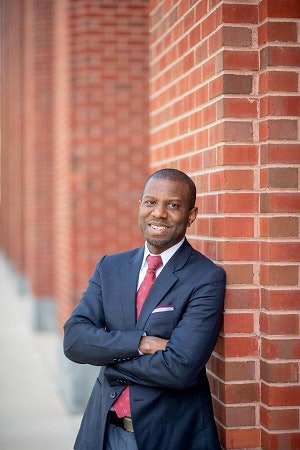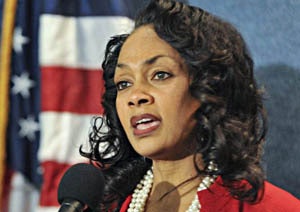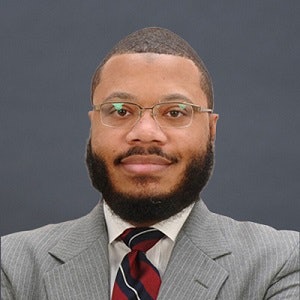Now that Dr. Miguel Cardona has been nominated to be the next U.S. secretary of education, speculation has turned to who will become the next executive director of the White House Initiative on Historically Black Colleges and Universities.
President Donald J. Trump signed an executive order moving the initiative from the U.S. Department of Education to the White House in February 2017. Months later, in September, he chose Johnathan Holifield to be the executive director. The co-founder of ScaleUp Partners, a consulting firm focused on economic development for underrepresented communities, Holifield was not a traditional pick.
But political observers said that Holifield did manage to secure some victories for HBCUs, including facilitating the Trump administration’s support for the HBCU Propelling Agency Relations Towards a New Era of Results for Students Act (HBCU PARTNERS Act).
 Dr. Ivory A. Toldson
Dr. Ivory A. ToldsonIn a series of interviews, HBCU leaders emphasized that they now want to see the next executive director come to the role with personal experience on an HBCU campus.
“We’re hopeful that it is someone who is intimately familiar with HBCUs,” said Lodriguez Murray, senior vice president for public policy and government affairs at the United Negro College Fund (UNCF). “It would be great if the person had attended the institution. It would also be great if someone had worked or led one of the institutions to understand the needs and concerns. HBCUs are not a monolith. … They should not be learning about the institutions, the types of students we serve and what our needs are on the job.”
One name that’s been thrown around as a possible pick is Dr. Ivory A. Toldson, who served in the position under former President Barack Obama. He’s a professor of counseling psychology at Howard University. Toldson’s selection would be consistent with President-elect Joe Biden’s current trend of nominating Obama administration appointees for his cabinet.
“I found it to be one of the most rewarding positions I’ve ever had,” Toldson said. “If after having it in the past, there are people who are considering me as someone who they would like in the future, I’m honored by that because of the indication that people outside of myself found me to be a value-add to that position. Regardless of what happens in the future … whoever is in that position, I would like to be in the position to give them the kind of guidance or assistance that they require to be successful in that position.”
Whoever Biden ultimately picks, Toldson wants the new executive director to be someone with strong relationships across HBCU campus leadership and across the federal government who can be a “liaison” between the two and who can encourage federal agencies to support HBCUs’ mission, whether that’s through research grants, outreach programs or other means. And his advice to the new executive director is to work closely with career staff to ensure that initiatives outlast his or her time in office.
 Lezli Baskerville
Lezli Baskerville“The federal government is the largest funder of HBCUs,” Toldson said. “They give more funding to HBCUs than private foundations and corporations by far. But the amount of revenue HBCUs get has to do with the relationships that they build. … In terms of racial justice, it’s going to be important for the federal government to understand the role of HBCUs in helping to heal society and helping to address long-term racial disparities in wealth and education.”
Lezli Baskerville, president and CEO of the National Association for Equal Opportunity in Higher Education (NAFEO) also emphasized the importance of that message.
HBCUs are “uniquely situated to move the nation to realizing its egalitarian ideal, stimulating the economy, healing the bodies, minds and spirits of the growing populations in America, leading in closing the education, employment, economic, wealth, health, sustainability and justice gaps and positioning, ‘We, The People’ to prevail in the battle for the soul of America,” she wrote in an email to Diverse.
For Dr. Walter M. Kimbrough, president of Dillard University, a recently retired or current HBCU president who served at least a decade would be the ideal choice. He wants someone who can “complement” the work of organizations like UNCF, the Thurgood Marshall College Fund (TMCF) and NAFEO and someone who deeply knows the “HBCU space.”
Dr. Johnetta B. Cole would fit that description. She served as the first Black woman president at Spelman College and later became the president of Bennett College.
Yet another possibility is Dr. Ruth J. Simmons, president of Prairie View A&M University, who previously served as the president of Smith College and Brown University, Simmons was the first Black woman to lead an Ivy League institution.
 Lodriguez Murray
Lodriguez MurrayDr. Melanye Price believes Simmons’ leadership experience in both HBCUs and predominantly White institutions uniquely qualifies her to point out disparities in funding. Price is an endowed professor of political science at Prairie View A&M University and the director of The Ruth J. Simmons Center for Race and Justice.
“… She is able to see the ways in which lots of agencies, corporations, donors treat HBCUs differently than they do PWIs,” Price said. “So, she understands what that equality looks like and can sort of demand better for HBCUs.”
But at Prairie View A&M, “nobody wants [Simmons] to leave,” she added. “Could she do the job? Yes. Would it be wonderful? Would she do amazing things? For sure. Do we want her to leave us? Absolutely not.”
Price hopes whoever occupies the position is an “aggressive advocate” for HBCUs who will pressure the new administration to focus on private HBCUs hard hit by the pandemic, hire HBCU student interns and put more and more equitable funding toward HBCUs in general, ensuring states do the same.
HBCU leaders also stressed that the new executive director should focus on funding infrastructure at HBCUs, providing supplementary funds during the pandemic and doubling the Pell Grant, given 75% of HBCU students are Pell-eligible.
“That’s the main thing we have to have happen,” Kimbrough said, “… to make sure that students who attend our institutions, and students of color as a whole, don’t have a greater loan burden than other students. They’re being penalized for being poor. If education is a great equalizer, you can’t go into massive debt trying to get equal, because you’re already in the hole and now you’re in a deeper hole.”
For Price, the future executive director is walking into a moment of opportunity, with HBCU alumni at “the center of American democracy.” She pointed to Vice President-elect Kamala Harris, a graduate of Howard University, newly elected Georgia Sen. Reverend Dr. Raphael Warnock, a Morehouse College graduate, and Spelman College alum Stacey Abrams, credited for turning out votes in Georgia.
For Biden, “the architects of his win are graduates of historically Black colleges,” she said. “The linchpins of his victory are graduates of historically Black colleges. And without their vision and leadership, he would not be president today. If this isn’t an argument for building up what these institutions can do, I don’t know what is.”
Sara Weissman can be reached at [email protected].















